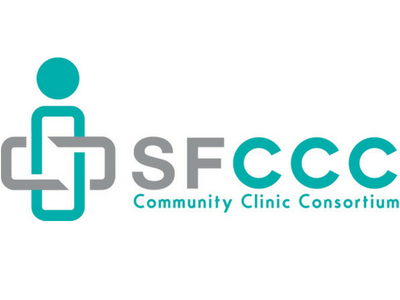Celebrating Dr. Bob Garcia in Honor of National Health Center Week
"Sometimes it’s the little things that you do that make a big impression."
The incredible value Health Centers bring to their patients and community is because of health center heroes – individuals who are committed to providing high quality care to patients in need. Health Center Heroes are dedicated to the Community Health Center Movement and deserve to be recognized. Today, join SFCCC in recognizing Dr. Bob Garcia and his commitment to providing high quality care to patients and companion animals in need through the VetSOS clinic. Check out SFCCC's interview with Dr. Garcia and find out why he loves what he does!
How long have you been working with VetSOS?
I’m not a particularly a “long termer,” but I think almost 2 years.
What is the best part about your job?
There are many favorites, but what stands out is the interaction with owners and their animal companions to improve their circumstance either with preventative care or spaying and neutering services (which we refer out to SPCA) as well as immediate medical care for non-life-threatening medical challenges.
Are there any patient stories that stand out to you?
Sometimes it’s the little things that you do that make a big impression and difference in their animal’s circumstance and people’s lives and I’ve had a number of circumstances where clients have been really sincerely appreciative for (in my mind) relatively minor stuff. The bottom line is that they really love their animal companions and they will do anything for them that’s possible to make the animal’s life more comfortable and better. We can help with that, sometimes in a very small way, but as I’ve said with a much bigger effect in the owner's mind.
All that said, I had a case several months ago that had a classic heart murmur for a heart defect that is detected in puppies. It was exciting to me for the fact that I had not heard this murmur in many years, as it is pretty rare and just cool when you can find it. I insisted that all the clinical staff (veterinarians and technicians) listen because it is so classical and not an everyday occurrence. Then we were faced with trying to find a pathway for the young couple owners to find a way to traverse a medical pathway to get an evaluation to determine the risk potential of anesthesia for the neuter, which was the main reason for my exam. Also, I’m hoping while this case is ongoing, if the defect is severe enough a procedure or procedures can be done to forestall or eliminate the risk for sequela. And yes, economics plays a role here, but with the help of our tremendous support team everything is done to pursue a successful path.
If you had any advice to give to providers who want to do this type of work, what would it be?
I guess a level of patience is necessary to do this work. We are a preventative healthcare clinic with a major focus on animal population control. We offer an initial exam and any treatment for free. For continued involvement, the animal patient must be spayed or neutered. Whatever biases, fears, or unfounded prejudice that exist by owners can be frustrating and difficult, but sometimes you can make inroads to change those views with small levels of knowledgeable input.
Secondarily, I think a level of objectivity is necessary. I often think of how lucky I have been personally to have had a great supportive family to allow me many, many levels of support and a level of education, which have allowed me a wonderful life including terrific involvement with animals. Many are much less fortunate, but to help some of them in a small way to have a better circumstance and create an improved condition for their animal companions is very rewarding to me.
